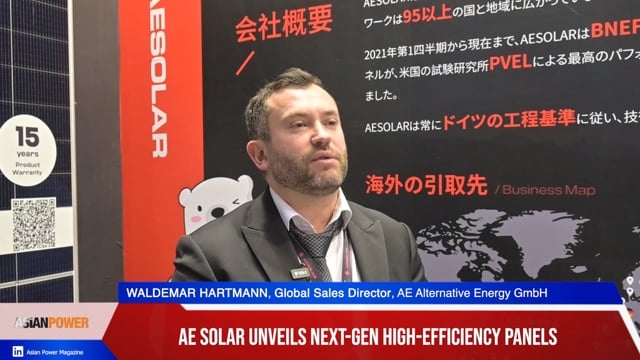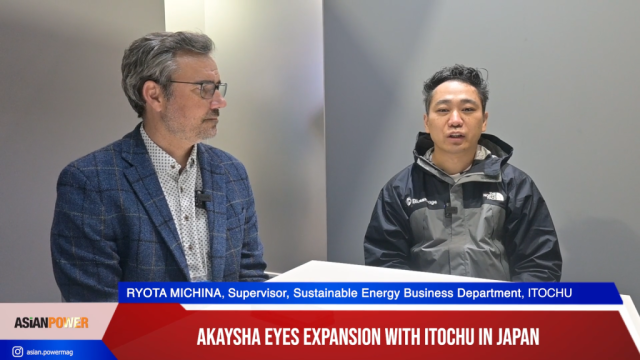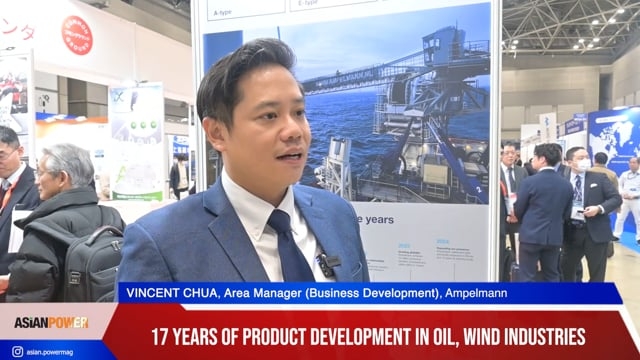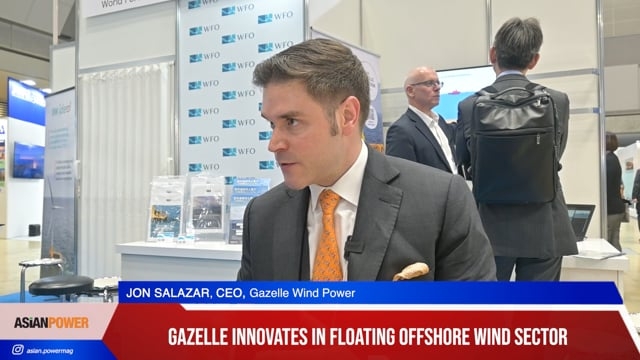
Why Philippines’ EDC will not fire up coal
The devastating effects of climate change led the company to develop REs only.
Whilst the Philippines-based Energy Development Corporation (EDC) continues to expand its portfolio, it is adamant that it will only stick to renewable energy (RE) and will not venture into coal for one main reason: climate change.
First Gen Corporation’s (First Gen) Vice President and Head of Strategy and Planning for Power Businesses Jay Joel L. Soriano cited the onslaught of Typhoon Yolanda, international name Haiyan, in 2013 which devastated their facilities and employees. EDC is First Gen’s 100% RE arm.
“We experienced firsthand what natural calamities can cause and it also opened our eyes to what harm climate change can bring to future generations,” he told Asian Power.
Aside from climate risks, Soriano also recognised the effects of the Russian invasion of Ukraine as another reason why the country should accelerate its adoption of renewable energy to protect consumers from inflation shocks.
What is the Energy Development Corporation's portfolio?
“We generate power purely from renewable energy (RE) largely because of our DNA. When we started in the 1970s, our mandate was to really look at geothermal energy. From the very beginning, we are a company that was looking at clean energy and is focused on protecting and nurturing the environment.
We have about 1,200 megawatts (MW) of geothermal energy across the entire country. We have a facility in Bicol, Leyte, Negros Oriental, and Cotabato. We've also added other technologies such as the 150 MW of wind in Ilocos Norte, our 132 MW hydro facility in Nueva Ecija, and about 11 MW of solar split between on-grid and rooftop. Overall, we account for 42% of the country's total generated power from RE.
Another reason why we prioritise investing in RE is that it's become very personal to us. If you look at our experience, particularly on the effects of the catastrophic event of Typhoon Yolanda in 2013, probably the worst super typhoon that ever passed our country. When it passed Leyte, our facilities were devastated. Our employees and their family were hurt. Our communities were in ruin. We experienced firsthand what natural calamities can cause and it also opened our eyes to what harm climate change can bring to future generations. In 2015, our Chairman Federico R. Lopez committed that we will never go into coal to do our part in the environment and in the clean energy transition.”
Why is there a need to accelerate the shift to cleaner energy, even for a small country like the Philippines?
“We're so small that we hardly contribute to greenhouse gas emissions, to begin with. There are still two reasons why it's important to accelerate the shift. First is climate risk. If you look at the climate risk index that the German Watch Organization issues, the Philippines ranks fourth in terms of the most vulnerable to climate change. If you look at certain estimates, they're saying that about Php3.5b of damage is caused every year by some of these natural catastrophes. There's a really strong case for us to say that we need to help ourselves. In spite of how small our greenhouse gas emissions might be, we need to at least be credible, that we're helping ourselves fight climate change, and doing our part in protecting the environment.
The second reason is quite observable. We're feeling the pain right now. If you've ever gone for a gas refill, you would notice that gas prices have doubled. The Russia-Ukraine war is affecting not just gas prices, but also electricity and commodities prices. One of the great things about renewable energy is that we're not exposed to all of these shocks and we can have greater control of our electricity prices. That's really one of the benefits where if we can move faster, quicker away from coal and into renewable energy, we can at least have greater predictability and control of our electricity prices.”
Although we have options, do we have enough RE supply to meet the Philippines’ entire power demand?
“Achieving 100% RE is like a dream come true. If you look at the latest Department of Energy data, we have 22% of renewable energy in terms of our generation mix. If you only look at our trajectory up to 2030, which includes the current and the committed plants, it's not going to move much from 22%. The encouraging number is the current plus the committed and the planned, where we see about 37% in terms of the generation mix. These are not assured, but companies are already looking at putting in the work to make these plans happen. That's along the lines of our country's commitment to getting to 35%. From the generation companies' perspective, there's a lot of work to be done. There's a lot of support and help that we need from the other players in the industry from the transmission and distribution players up to the households.”
How can they help with the government’s RE mix target?
“The work that former Energy Secretary Alfonso Cusi has done over the past years, I'd characterize it as really operationalising or enforcing a lot of the laws, the frameworks that are already present. We've seen Retail Competition and Open Access (RCOA), which allows contestable customers to contract directly with generation companies, start to gain traction. We've seen green at the Green Energy Options programme being launched. The Green Energy Auction programme was also held where we auctioned our first 2,000 megawatts.
As there are laws, frameworks and government support in place, players need to take part in supporting a lot of these frameworks in regulations so the whole ecosystem around the transition to cleaner energy happens. Companies have to take advantage to use these laws to help propel greater renewable energy penetration. For those who are still invested in coal, there have to be efforts done to divest these coal power plants.”
The Philippines recently welcomed the new administration. What should this administration do in terms of policies and implementations to help RE players?
“It would help if they continue the work that's already been done. If all of these policies have already started or continued to be supported by the next administration, I think we're headed in the right direction.
If you look at the other countries, there's a lot of effort to ensure choice. RCOA does that. The Green Energy Options Programme does that. The thresholds have to be lowered so that it goes all the way up to the household level. Consumer option allows households and people who truly believe in this clear clean energy transition to put their money where their mouth is to really support the clean energy transition. Right now, if you want geothermal to supply your needs, you're not at the point where you can do that yet.
The Green Energy Auctions Programme or GEAP is the other thing that was just recently concluded. If I recall the numbers correctly, solar was oversubscribed. There isn't a GEAP yet for geothermal and hydro. If that mechanism also happens for geothermal and hydro, it's another way where the government and supporting mechanisms can help further investments into very critical technologies in terms of the RE space.”
What are the upsides of producing renewable energy for the Philippines?
“The great thing about renewable energy is that we have better control of the fuel supply, which then gives us a lot better predictability and pricing. All the technologies that are available to us—solar, wind, hydro, and geothermal—are very location specific. We're very blessed in the Philippines that our natural resources can support these technologies.
I’ll focus in particular on geothermal, where we're really strong. Geothermal is not something you can find anywhere else in the world. It's specific to the Pacific Ring of Fire, places like Indonesia, the Philippines, and Hawaii. We're blessed to have access to these natural resources that can supply our energy. Rather than exposing ourselves to greater imports and greater shocks to the commodity prices externally, I think it's a lot better for us to develop what we have in the country. That gives us a lot more energy security, and a lot more predictability over our energy prices.
Another thing also is that renewable energy tends to go to where the resources are abundant. At least from our own experience in geothermal, we typically find them not inside the cities. We find them up in the mountains, we find them in the rural areas, we find them in the provinces. As we begin to develop these power plants in the remote areas of the country, we create jobs, we create a livelihood for those smaller communities that otherwise would probably have a very difficult job finding a livelihood. They have to go to the city, they have to go to Metro Manila. But now instead of them going to Metro Manila, we're going to them. That's very helpful from a community perspective.”
Developing geothermal was the initial mandate of EDC. What's the potential of geothermal energy in the Philippines in the next three to five years?
“The government estimates that around 5,000 megawatts (MW) can be developed. But geothermal takes a lot of years to develop compared to solar and wind. When it comes to geothermal, we're really digging deep into the Earth's surface. So there's a lot of study behind that. There's a lot of work to make sure that as we do our geothermal exploration, we remain responsible developers, we protect the environment, and we protect the ecosystem that we're at.
Having said that, we're quite proud that we just recently inaugurated our 3MW plant in Cotabato right beside our existing facility in Mt. Apo. We have other projects that will probably add around 30MW to 50MW more over the next couple of years. We continue to look for other sites where we can continue to explore and build more geothermal facilities.”
How do you envision the Philippine energy landscape 10 years from now?
“I hope we get to the 35% renewable energy mix that we’re all aspiring for, that at least all the players in the industry are starting to work towards. I also hope that the conversation picks up not just on the supply side where everyone's starting to build RE, but on the demand side as well, where people appreciate that we have RE in the Philippines, we have natural resources that can support renewable energy, and that we all work towards using, contracting, supporting renewable energy. If we get to that point where RE plays a greater and more pivotal role in our consumption of energy, I think that would be a nice sort of endpoint come 2030.”























 Advertise
Advertise








